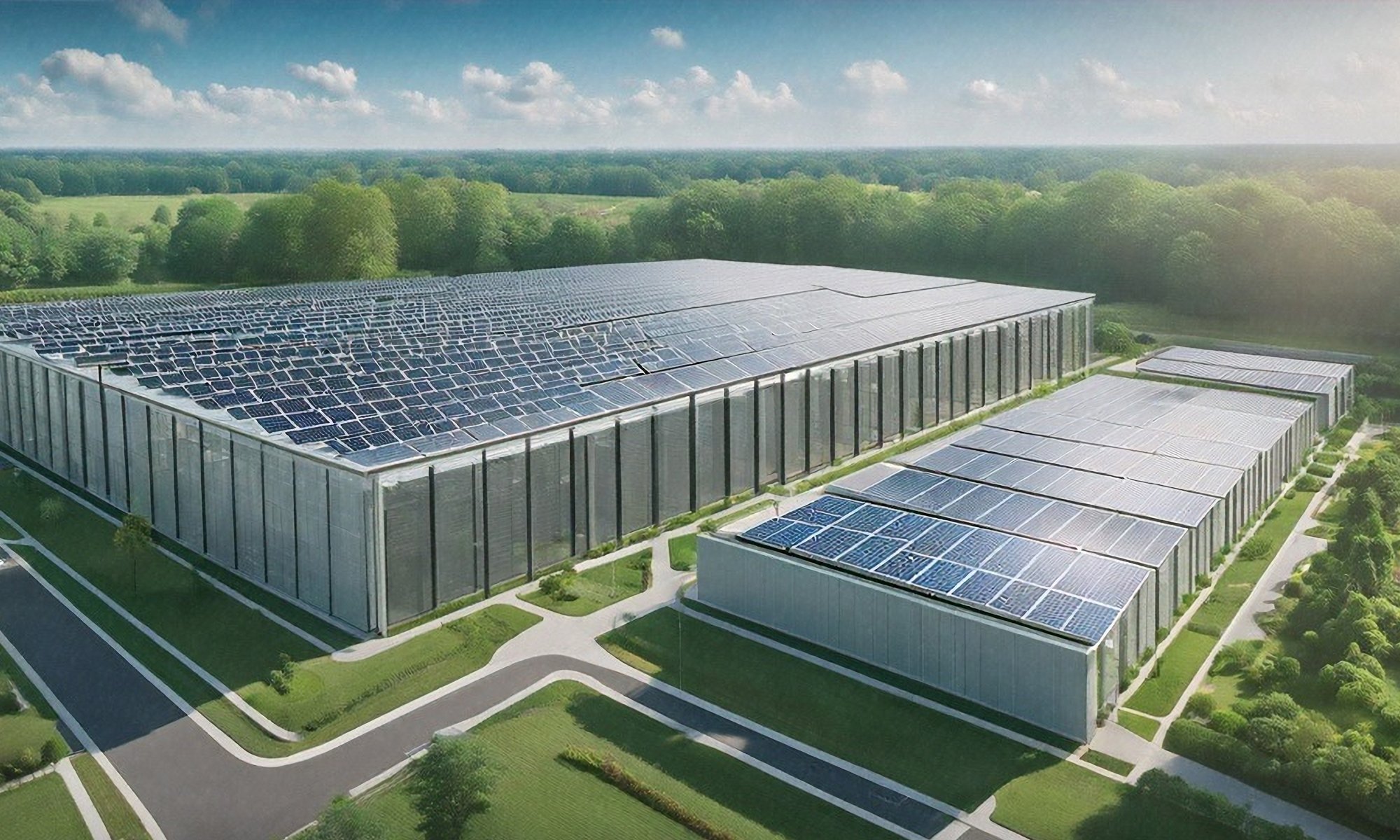Data Centers: The Next Big Impact Investment Vehicle?

As the demand for digital infrastructure accelerates – driven by rapid advancements in artificial intelligence, cloud computing, and data-heavy applications – the need for new data centers continues to rise. These critical facilities are the backbone of the digital economy, but their development can present challenges, particularly when they appear disconnected from the communities in which they’re built. We sat down with the latest addition to the CIVITAS team, Steve Lamar, Leed AP, EMCA, to talk about how to make these critical investments pay off for the entire community.
CIVITAS: Steve, you have a unique perspective on data center development, given your experience in construction management, supply chain resilience, and sustainability for some of the country’s largest owner occupiers in the tech space. Tell us about your take on what’s next for data center development.
LAMAR: Whether you are working in real estate, construction, financing or tech, it is hard to escape the data center boom across the country. As someone who is dedicated to the long-term health and stability of the communities I work in, data centers represent more than just big boxes and racks. I see them as engines of opportunity and drivers of lasting community advancement. With the proper strategy around partnerships and deal structuring, as well as a more expansive perspective, data center development can also become a force for community upliftment. By intentionally weaving these projects into the social and economic fabric of our communities, we can drive lasting improvements in infrastructure, workforce evolution, education, and overall quality of life.
Select a Location with Social Responsibility in Mind
CIVITAS: In real estate site selection, it’s all about location, location, location. How does this apply to the opportunity for local impact for the data center economy?
LAMAR: Location is one of the most critical factors influencing the social impact of data center development. Where a facility is built shapes its long-term relationship with the surrounding community and its contribution to broader ESG (environmental, social, governance) goals. Early due diligence (such as land use studies, community context analysis, and infrastructure assessments) is fundamental to ensure the project supports both operational needs and local priorities. As the next generation of Opportunity Zones takes shape with the Department of Treasury, there will be a renewed interest in reaping the social, economic, and tax benefits of data center development in underinvested rural communities. These benefits can be layered with the creation of TIF and PILOT districts and New Markets Tax Credits to further drive economic growth in income-eligible areas and potentially pool incremental tax revenue into funding public school or infrastructure trusts or other community benefits. The truth is, by aligning data center development strategies with the community's needs, developers can reduce risk, gain public trust, and increase the long-term ROI of the investment.
Build Trust and Value Through Community Engagement
CIVITAS: The potential for community partnership seems largely untapped. What are some novel starting points for accelerating impact, and which stakeholders might make great partners?
LAMAR: Building strong partnerships with educational institutions can be a great place to begin. In Northern Virginia, data centers have partnered with Northern Virginia Community College and other institutions to develop specialized training programs in data infrastructure, cybersecurity, and cloud computing, while also offering scholarships to local residents. These initiatives give career changers and skilled trades, who might not have previously seen a way into the tech sector, access to well-paying jobs and careers. Another great example is Google's Skilled crafts and Readiness (STAR) program, which offers practical instruction in fiber optics, construction, and other technical professions required to develop and maintain data centers. As the workforce in our country continues to evolve, these programs give students and those seeking career growth the tools they need to succeed in the rapidly evolving digital economy while staying in their own communities.
CIVITAS: Putting people first is always a great way to build local trust and partnership, which has often been a challenge when we think about the infrastructure demands that data centers impose upon communities. What are some strategies for making the infrastructure buildout a win-win for local communities?
LAMAR: It is also well known that data centers demand significant infrastructure improvements, which can be perceived to come at a high cost to residents. Partnering with local utilities and internet service providers is essential, not only to fulfill operational needs but also to generate broader community benefits. Whether it’s expanding reliable power, rural high-speed fiber-optic connectivity, or upgraded water systems, these improvements can deliver lasting advantages to the entire neighborhood. One of the best examples is the Massachusetts Green High Performance Computing Center in Holyoke. By partnering early with the local utility providers, the center upgraded local fiber and electrical systems that have gone on to benefit both its operations and neighboring households. These enhancements have brought more reliable services to the community and created a strong foundation for long-term economic and digital improvements.
CIVITAS: Data centers are rarely considered job creators. How can developers and owners change this perception and truly raise local employment and income levels?
LAMAR: Job creation is another direct and immediate benefit of data center development. The construction phase alone can last several years and require hundreds and even thousands of skilled and semi-skilled laborers, electricians, engineers, heavy equipment operators, and construction contractors. Once operational, data centers create long-term employment opportunities in areas such as security, IT support, maintenance, and facility management. Tract’s development of a 1,500-acre data center campus in Caldwell County, Texas, is a striking example of this. The project is expected to generate thousands of jobs throughout its construction and operational lifecycle, injecting millions of dollars into the local economy and offering career pathways for residents who might otherwise be left behind in the digital transition. In Virginia alone, data center labor income is estimated to top $5.5 billion in 2025.
CIVITAS: How can local leaders be confident that this job creation will be locally-driven and inclusive?
LAMAR: Some companies are going even further by incorporating inclusive hiring practices and workforce development into their business models. Blackstone, through its portfolio company QTS Realty Trust, has launched career training initiatives aimed at individuals from underrepresented communities. Their programs offer paid internships, mentorship, and direct placement into full-time roles. These kinds of efforts not only fill staffing needs but also broaden the talent pipeline and help remove employment barriers that exist for the communities that need opportunities the most.
CIVITAS: In addition to employment and education, how can data center projects be structured to deliver long-term fiscal benefits to the communities they call home?
LAMAR: Every jurisdiction has local needs, and every project is unique to the end user. Therefore, we can build a toolbox of case studies and best practices to create lasting fiscal impact. The University of Dallas, for instance, is converting underutilized land into a data center site projected to generate more than $8 million annually in local property tax revenue. That kind of recurring revenue can be a game-changer for local governments looking to fund schools, improve transportation infrastructure, enhance public safety, or offer new public services. When structured with community benefit agreements or public-private partnerships, these projects can offer even greater transparency and accountability, ensuring that generated funds are reinvested into local priorities.
CIVITAS: How can data centers serve as anchors for smart city infrastructure?
LAMAR: In Pasco County, Florida, the Connected City Project is pioneering an integrated community built around gigabit-speed internet access and smart utilities, all supported by underlying data center infrastructure. This model emphasizes connectivity, sustainability, and forward-thinking design which are all components essential to closing the digital divide and preparing communities for the future. Residents benefit not only from high-speed internet, but also from better access to telehealth, remote learning, and modern municipal services.
CIVITAS: These examples point to a broader truth: when developed with intentionality, data centers can serve as more than silent utility buildings, they can be neighborhood assets. They can provide the financial muscle to support affordable housing, revitalize aging infrastructure, and invest in local culture and recreation. By leveraging public-private partnerships and community land trusts, developers and municipalities can co-create plans that ensure data center revenues benefit long-standing residents rather than accelerating displacement or gentrification.
LAMAR: That’s correct. However, for this model to succeed, community leaders, developers, and policymakers must think and dream bigger. Community engagement must begin early, before groundbreaking, and should include local voices in planning discussions. Data center developers can offer community benefits packages, support local nonprofits, and establish advisory boards to keep residents informed and involved. Transparency in these relationships builds trust and ensures that growth is inclusive rather than exclusive.
When we bring all these elements together with a genuine commitment to our communities' best interests, these programs become not only possible, but essential, for aligning development with the principles of the triple bottom line: balancing economic growth, social equity, and environmental sustainability. We must treat data center development not simply as a way to meet the world's growing digital needs, but as an opportunity to rewrite the story for communities that have long been left behind. These facilities can help fund the things that truly matter, quality education, accessible healthcare, economic mobility, and resilient neighborhoods.
Address Sustainability and Perception Challenges
CIVITAS: As data center development accelerates, neighbors and environmental stakeholders may raise issues such as construction noise, increased traffic, strain on water and energy systems, and the carbon footprint of building materials. While these concerns are valid, how can an impact focus address these challenges?
LAMAR: To shift these perceptions, leading developers are incorporating energy-efficient design and sustainable construction practices, and rigorous site selection criteria to minimize disruption. Continued investment in R&D has driving energy efficiency; for example, despite a 550% increase in computing capacity between 2010 and 2018, global data center energy consumption rose by only 6% over the same period, according to research published in Science by the American Association for the Advancement of Science. Closed loop cooling technology for water efficiency, onsite power generation, and advancements in SMR adoption represent game changers for data center sustainability. Transparent communication about these advances and open dialogue with residents, as well as documented commitments to sustainability are key to earning trust and support.
CIVITAS: In closing, data centers represent a powerful intersection of technology and community development. If we approach them with vision, accountability, and collaboration, they can do far more than store data, they can store potential. As brokers, agents, builders, and community advocates, we have the responsibility to ensure that potential is realized not just in server uptime or ROI, but in the lives and futures of the people around them. Through thoughtful development and imact-driven reinvestment, we can use this moment to transform our communities with civic-minded data center strategies.
The CIVITAS team believes that thoughtful, integrated development is key to operational success and long-term community benefits. As a commercial real estate firm with extensive expertise in data center development, we work closely with our clients to design data centers that support not only their business objectives but also the communities in which they operate. From selecting the right location to implementing sustainable building practices, we offer top strategies to ensure your data center project benefits your bottom line and the surrounding areas.
Interested in discussing an upcoming data center project? Connect with us today to implement these strategies.

